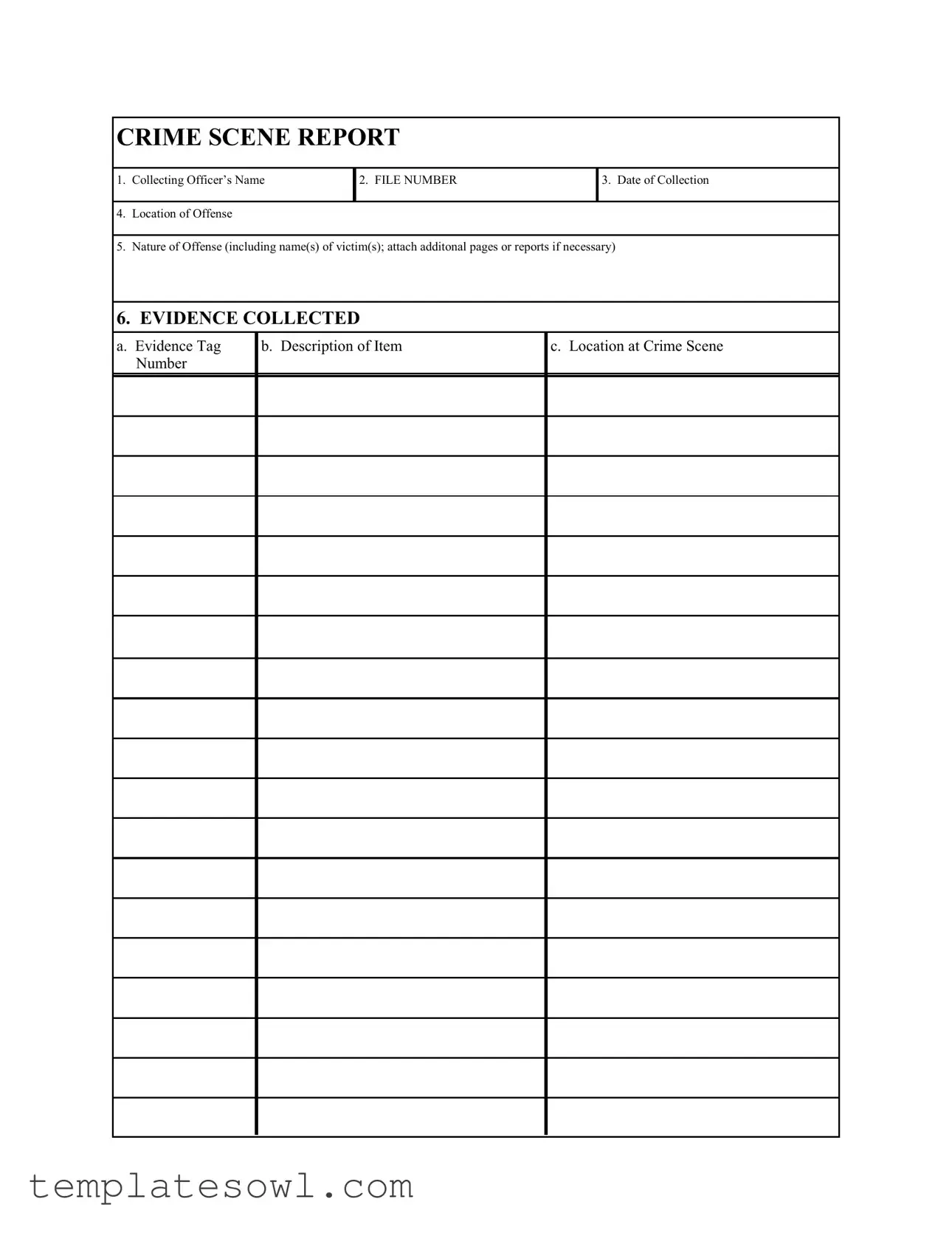What information do I need to provide on the Crime Scene Report form?
The Crime Scene Report form requires several key pieces of information. You must include the collecting officer’s name, the file number, and the date of collection. You also need to specify the location of the offense and describe the nature of the offense, including the names of any victims. If necessary, attach additional pages or reports for more detail.
How do I document evidence collected at the crime scene?
Documenting evidence involves three critical components. First, assign an evidence tag number to each item collected. Then, provide a description of the item, detailing its characteristics. Lastly, note the specific location where the item was found at the crime scene. This detailed recording helps in maintaining the integrity and traceability of the evidence.
Is it necessary to attach additional pages to the form?
Yes, it is highly recommended to attach additional pages if you have more information to provide than the form allows space for. This helps ensure that all relevant details about the offense and the evidence are documented thoroughly, as incomplete reports can hinder investigations.
Who is responsible for filling out the Crime Scene Report form?
The collecting officer is responsible for filling out the Crime Scene Report form. This officer is typically the first to arrive at the crime scene and takes charge of documenting the scene, collecting evidence, and ensuring that all necessary information is accurately recorded.
What should I do if I make a mistake on the form?
In the event of a mistake on the form, cross out the incorrect information with a single line. Then, write the correct information next to it. Make sure to initial the correction and date it to maintain the clarity and credibility of your report.
Can multiple officers contribute to one Crime Scene Report?
Yes, multiple officers can contribute to a crime scene investigation, but one officer should complete the Crime Scene Report form to maintain consistency. Additional officers can provide supplementary reports as needed, but all information should ultimately link back to the main report for clarity and accountability.
How is the Crime Scene Report used after it is completed?
Once completed, the Crime Scene Report serves multiple purposes. It acts as an official record of the incident and the evidence collected, which can later be used in investigations, court proceedings, and follow-up actions by law enforcement. It is critical for ensuring all procedural steps are documented and can be referenced when necessary.

